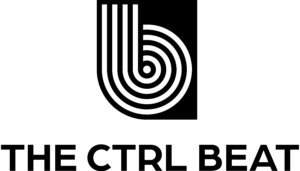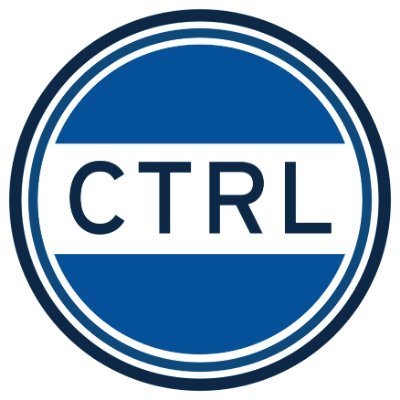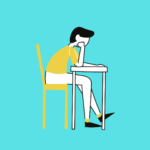Student Insights on Current Events:
A Tool for Fostering Critical Self-Awareness, Transformation, and Belonging
By Phelton C. Moss, Senior Professional Lecturer,
School of Education, American University
Current events can be a tremendous tool in supporting students to understand the class core content comprehension. It can also provide professors with insight into pedagogical moves to foster more inclusive classrooms. That means current events can serve as tools for students and faculty to (1) engage in history and critical self-awareness, (2) actively transform their ways of being, acting, and doing, and (3) foster a sense of belonging.
I can remember incredible experiences doing current event presentations in middle and high school for my history classes. These were especially valuable experiences for me, having grown up in a small-town Mississippi where I had little access to the world. I learned so much from my peers about the world. I can explicitly recall a current event where I learned about Black soldiers’ role in World War II. At no time otherwise, in the class, had I seen my ancestors appear in my education in ways not unique to the Black struggle for justice and equality.
However, when I transitioned from secondary to post-secondary learning, one of the biggest gaps was many of the core pedagogical moves my secondary teachers made to ensure I felt included and could make strong connections to the content. While I had two college professors who connected the week’s content to issues of the day in a very explicit way by leading current events themselves, no opportunities existed for my classmates and me to make those connections through current event presentations.
Today that is not the experience of my graduate students. In fact, it is quite the opposite. Given my journey toward an unapologetically inclusive classroom that actively seeks to engage students in critical self-awareness, transform their ways of being, doing, and thinking, and foster a sense of belonging, over the last three semesters, I’ve required my students to provide a 20-minute current event presentation for each lecture.
For the presentation, students are expected to use the current week’s readings to find a relevant issue in the popular press, engage students in a discussion around the connection of the relevant issue to the week’s core content, and offer a summary of the week’s readings.
This practice has benefited students in that they have an opportunity to hear their peers contextualize and offer a summary of the current week’s readings. I’ve found this practice strengthens classroom discussion and allows students who may have missed a key point in their reading an opportunity to skill up for the big discussion. Not only that, but it also improves my delivery of core content, as my understanding of students’ sensemaking in the classroom improves.
Upon reflection, this requirement was a formative experience in my development as a teacher and human being. Those moments promoted self-awareness, transformed my ways of thinking and being, and made me feel like I belonged in the classroom.
Like then, today, I’ve learned a lot through the student presentations about how the students make sense of the content to learn about relevant issues, which has strengthened my ability to foster a more inclusive classroom by examining their pedagogical leanings. From student reflections I have found they see these practices as an opportunity to engage in critical self-awareness, transform their way of being, and foster a deep sense of belonging.
Below are three reflections from students on their experience with current events as tools for students to (1) engage in history and critical self-awareness, (2) actively transform their ways of being, acting, and doing, and (3) foster a sense of belonging.
Current events as a tool for engaging students around history and critical self-awareness
Our presence in the timeline of history is lost in fulfilling the obligations of the present.
“As full-time workers and part-time students, especially when the content of our classrooms are largely theoretical, it is easy to inadvertently create a barrier between ourselves and the notion of history concurrently being made around us. Our presence in the timeline of history is lost in fulfilling the obligations of the present. Even in a course dedicated to policy in all its iterations, we can become so focused on the contexts of the past that we lose sight of how it informs the reality of now.
As such, these presentation opportunities that invite us to connect context to happening directly can remind us that even while we learn, new development, movements, activists, and leaders are actively forging the future. As now-students and practitioners with a stake in that future, our discussion of an engagement with these events matters as much to me as the past, which may inform.”
– Ethan Barbin, MEd, Education Policy & Leadership Graduate Student
Current events as a tool for actively transforming the way of being/doing/thinking
The current event tool actively transformed my engagement with new information from all sources.
“The current event assignment allowed me the space to reform my approach when analyzing readings in the course and life. In high school and undergrad, teachers provided readings highlighting their lessons with assigned questions to guide their points. Given the responsibility to lead a discussion in the course, I felt encouraged to question the text in a new way to provoke thoughtful discussion amongst my peers and make real-world connections. As a researcher, I value the critical thinking skills I learned from the course, like the 4 A’s Protocol, to summarize the text and deepen my connection to the work. The current event tool actively transformed my engagement with new information from all sources.”
– Ashlyn Thomas, MEd, Education Policy & Leadership Graduate Student
Current events as a tool for belonging
[Current events activities and discussion] led to a period of emotional self-reflection in our classroom, allowing us to draw on our personal experiences as educators and students to gain deeper insights.
“Through the opportunity to present a current event connected with the respective week’s readings, I was able to get creative and express my individuality to engage my peers in the content. My approach was to initiate a fun activity centered around the purpose of Education through basketball—a sport I am passionate about. Each student was given a piece of paper to share their thoughts on the proposition, “What is school for?”. They were then given the chance to throw their paper into the basket. The caveat was that they had to remain in their seats, giving an unfair advantage to students seated closer to the basket. This was an important circumstance to highlight as, in the United States, we may all be held to the same high standards; however, we often overlook the context through which different students come from. We don’t all start from the same vantage points; some come from wealth and systemic racial disparities. My own journey in the United States began with ‘Temporary Protective Status,’ a legal classification assigned to refugees from war-torn countries. Not everyone’s shot made it into the ‘net’.
After discussing the various perspectives among the class, we listened to a spoken word piece by the acclaimed artist Prince EA which passionately highlighted the challenges faced by our youth in the education system. This led to a period of emotional self-reflection in our classroom, allowing us to draw on our personal experiences as educators and students to gain deeper insights. Finally, I highlighted key historical movements from the assigned readings that described how we got to where we are in Education Policy today.
Overall, this experience challenged me to make sense of the material in a way I’d be comfortable teaching. Moreover, it offered me a new perspective on my peers’ viewpoints, allowing us to connect where we may not have otherwise. Most of all, I felt belonging in a classroom of like-minded friends and professionals who indulged me in an educational pursuit through sports, art, and self-reflection. I believe this experience will impact my contributions to the field, and I look forward to further engaging with these important issues.”
– Souheir Atassi, MEd, Education Policy & Leadership Graduate Student
Author Profile
Dr. Phelton Cortez Moss is a Senior Professorial Lecturer of Education Policy & Leadership at American University and is a Senior Policy Adviser to Congresswoman Frederica Wilson (FL-24), who serves as Chair of the Higher Education and Workforce Investment Subcommittee. Phelton began his career in education as a high school English teacher in Greenwood, Mississippi, where he was Teacher of the Year for two consecutive years and a Teach for America corps member. He holds a Ph.D. in Educational Leadership from the University of Mississippi and a BA in Public Policy Leadership and English from the University of Mississippi. He holds a certificate in Education Finance from Georgetown University. Phelton is a member of The Reading League National Board of Directors. He is a member of Alpha Phi Alpha Fraternity, Inc.



